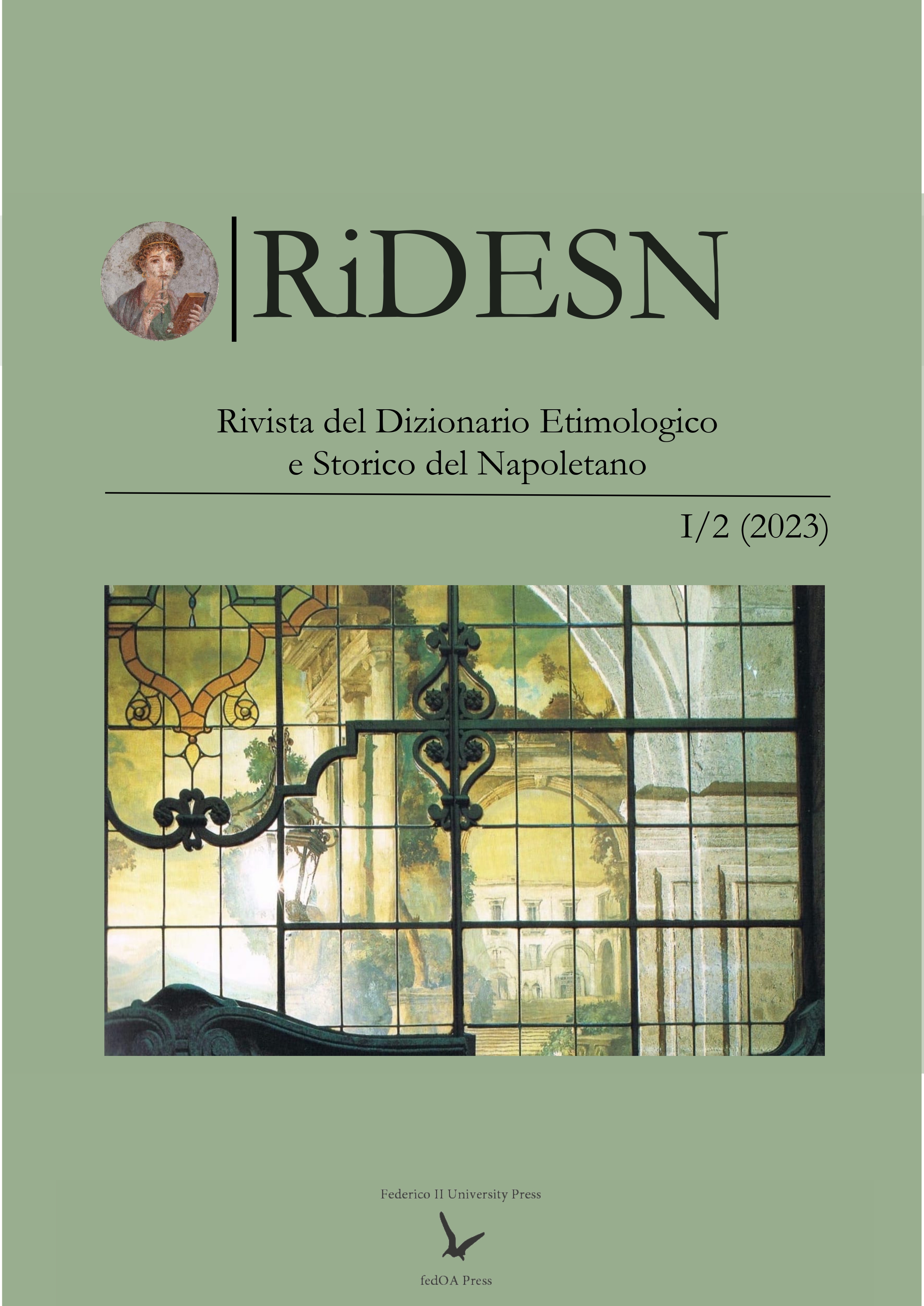'Strambe' e 'bisbetece': un’analisi stilistica dei 'Vierze' di Filippo Cammarano (1837)
DOI:
https://doi.org/10.6093/ridesn/10597Keywords:
Filippo Cammarano, 19th-century neapolitan poetry, Neapolitan dialectal poetry, stylistics, metricsAbstract
The son of Giancola Cammarano, one of the most famous Pulcinellas of the 18th century, Filippo Cammarano was from childhood a protagonist of the Neapolitan theatrical world between the 18th and 19th centuries. In addition to his important role as a theatrical innovator, Cammarano was also the author of many poems, as evidenced by the publication in 1837 of Vierze strambe, e bisbetece. A playful collection by an old playwright, tracing the main stages of his career, these Vierze are composed of a wide range of metrical forms, such as sonnets, sixth rhymes, octaves, alexandrines, up to curious experiments such as strammuottole, quatrains of decasyllables or the so-called vierze a zompariello. This paper aims to analyse this late work of Cammarano, combining linguistic notes on his Neapolitan with a study of the metrical structures that regulate the same dialect.


